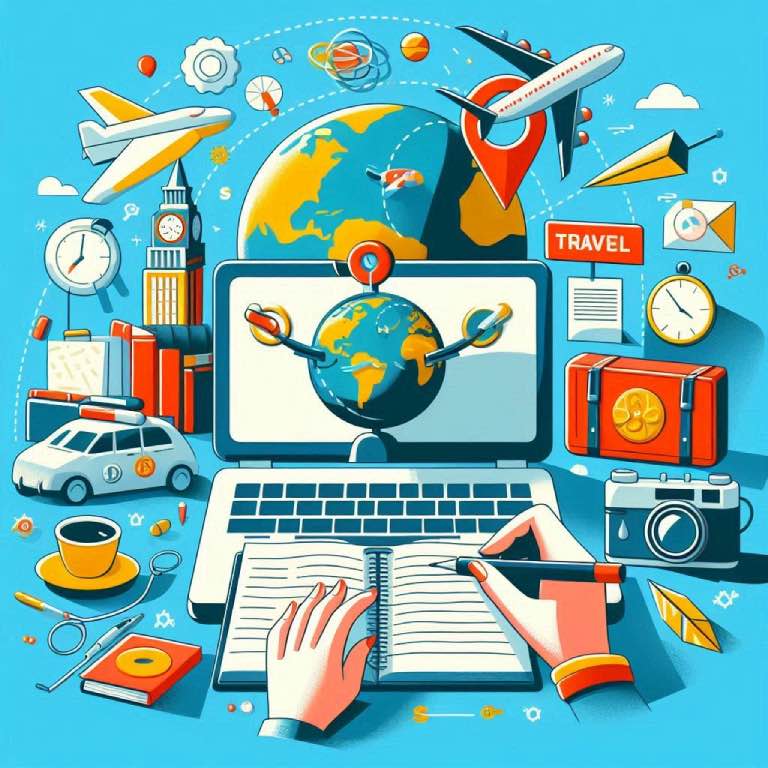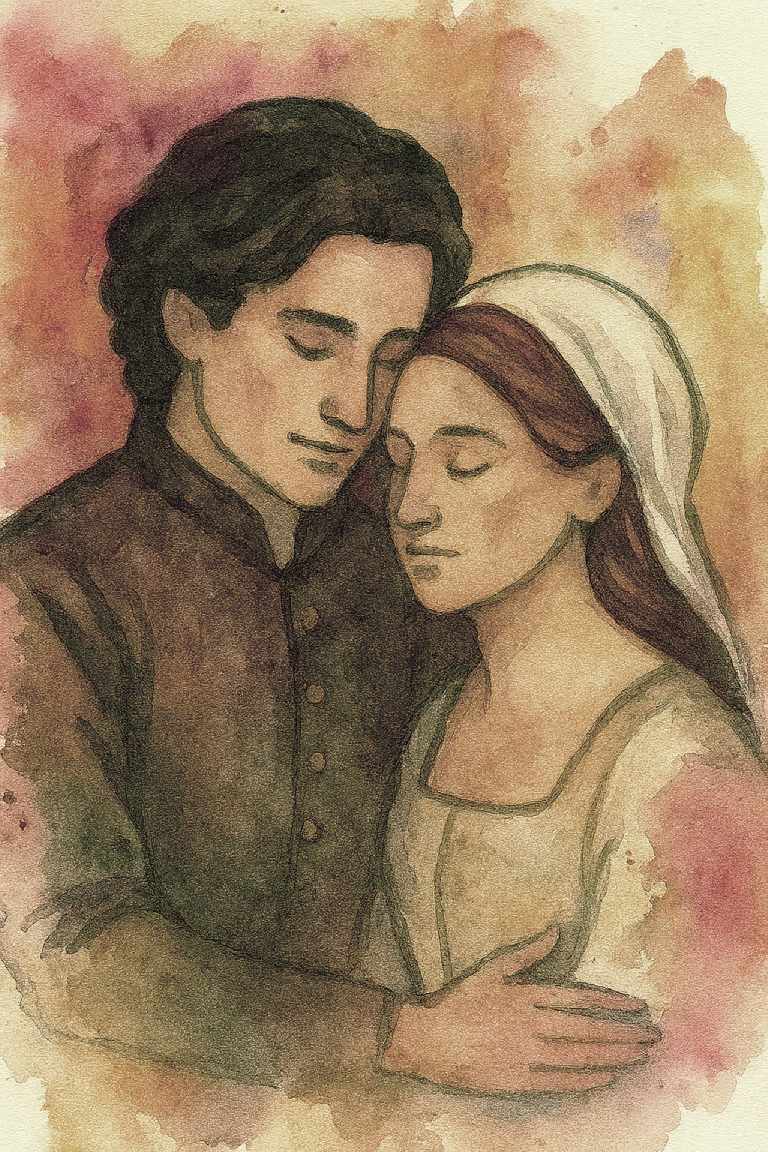- Travel writing combines discovery with storytelling, offering vivid descriptions and personal reflections that transport readers to far-off places. It promotes cultural understanding and empathy, broadening perspectives through shared experiences.
- Notable travel writers contribute insights that resonate with authenticity, inspiring future travelers and writers.
- The foundations of travel writing include:
– History and evolution from ancient times to modern forms
– Diverse definitions encompassing literary travel writing and practical travelogues - Genres and styles range from literary travel books to dynamic travel blogs, each offering unique perspectives. Crafting compelling travel tales involves:
– Effective narrative techniques
– Descriptive language - Publishing options include traditional routes and self-publishing, each with benefits and challenges.
- Ethical considerations include:
– Cultural sensitivity
– Writer’s responsibility to promote sustainable and respectful travel practices.
Travel writing holds a distinctive place in literature, combining the allure of discovery with the art of storytelling. Through vivid descriptions and personal reflections, travel writers transport readers to far-off places, offering both information and a sense of shared adventure. This unique genre captures the essence of destinations and the experiences of travelers, making it an invaluable resource for those looking to explore the world with their writings.
Travel writing has an influence that goes beyond simple entertainment. It frequently acts as a bridge among cultures, promoting respect and understanding for various ways of life. These stories foster empathy and broaden perspectives, enhancing the reader’s understanding of the world by illuminating strange traditions and environments.
Notable travel writers have significantly contributed to this genre, offering insights that resonate with authenticity and depth. Their works inspire not only future travelers, but also aspiring writers who want to master the art of turning journeys into compelling literature. Through meticulous observation and evocative prose, travel writing continues to captivate and inform, leaving a lasting impression on both literature and culture.
The Foundations of Travel Writing
Travel writing occupies a unique space in literature, bridging the gap between journalism, personal reflection, and storytelling. Its intricate history and diverse definitions reveal its enduring impact on our understanding of different cultures and places.

History and Evolution
The roots of travel writing can be traced back to ancient times. Early travelers like Herodotus and Marco Polo documented their journeys, blending factual recounts with mythical tales. By the 18th and 19th centuries, travel writing had evolved significantly.
The Grand Tour, undertaken by European aristocrats, inspired detailed travelogues. These works combined personal observations with descriptions of art, architecture, and society. In the 20th century, travel writing took diverse forms, from travel guides to literary essays by writers like Paul Theroux and Bruce Chatwin.
This evolution reflects changes in society and the growing accessibility of global travel.
Defining Travel Writing
Travel writing defies a single definition. At its core, it is about capturing the essence of a place through the writer’s eyes. This genre includes both literary travel writing and more practical travelogue writing. Literary travel writing often involves deeper reflections on culture and nature, blending narrative techniques with factual detail. Travelogues, on the other hand, provide practical information for travelers, often including tips, historical context, and personal anecdotes.
Travel writing may take various forms, such as guidebooks, essays, or memoirs. It serves to inform, inspire, and transport readers, offering a window into other worlds. The significance of travel writing lies in its capacity to foster a greater appreciation and understanding of diverse cultures and geographies.
Genres and Styles
Travel writing encompasses a variety of genres and styles, each offering unique perspectives and insights into the world. It ranges from beautifully crafted literary travel books to dynamic and interactive travel blogs, each format providing a distinct experience for the reader.

Literary Travel Books
Literary travel books serve as a bridge between travel and literature. These writings are known for their eloquent prose and insightful observations. They often blend personal journeys with broader cultural and historical narratives. Notable works in this genre include Journey Without Maps (1936) by Graham Greene and An Area of Darkness (1964) by V.S. Naipaul.
Authors in this genre aim to entertain and educate. The narratives are rich with detailed descriptions and reflections on the places visited. Such books often explore the human condition, delving into themes of identity, belonging, and transformation. The writing style tends to be introspective and evocative, drawing readers into the author’s journey both literally and metaphorically.
Travel Blogs and Digital Narratives
Digital narratives and travel blogs have revolutionized the sharing of travel experiences. These platforms allow for real-time updates, interactive elements, and multimedia content. Unlike traditional literary travel books, blogs can include photos, videos, and maps to enhance the storytelling.
Bloggers often write in a more conversational and personal tone. They focus on practical tips, personal anecdotes, and immediate experiences, making their content highly relatable and accessible. Blogs such as Nomadic Matt and The Blonde Abroad have garnered large followings due to their engaging content and useful travel advice.
The digital format also allows for instant audience feedback and engagement. Readers can comment, share their experiences, and build a community around shared travel interests. This interactivity transforms travel writing into a collaborative and ongoing narrative.
Crafting Compelling Travel Tales
Crafting a captivating travel narrative entails using precise narrative techniques and rich, descriptive language to capture the essence of the journey and deeply engage readers.
Narrative Techniques
A strong travel tale employs effective narrative techniques to shape the story. Begin with a compelling opening that grabs the reader’s attention. Dialogue adds an authentic touch, reflecting interactions and cultural nuances. Incorporate conflict and resolution to generate suspense and ensure a satisfying conclusion.
Using flashbacks can enrich the narrative, providing context and depth. Maintain a consistent point of view to ensure coherence. Employ “show, don’t tell,” to illustrate experiences vividly rather than merely describing them.
Incorporating Descriptive Language
Descriptive language breathes life into travel stories. Use sensory details to transport readers—describe the sight, sound, smell, taste, and touch elements of a place. Precise adjectives and vivid imagery enhance the narrative’s impact.
You can use metaphors and similes to evoke visual impressions. Local dialects and phrases can add authenticity to the tale, bringing the locale’s essence to life. Avoid passive language and instead employ active verbs to maintain engagement and dynamism.
Travel Writing as Literature
Travel writing holds a significant place in the literary canon because it documents human experiences and explorations across time and space. Additionally, it often involves innovative stylistic elements that influence other literary genres.
Contribution to Literary Canon
Through its meticulous documentation of journeys—both literal and metaphorical—travel writing enhances the canon of literature. It encapsulates the essence of many social conventions, landscapes, and cultures. This category offers readers distinct perspectives on the diversity of the world, promoting a deeper comprehension of humanity as a whole.
Prominent examples include the works of Marco Polo and Ibn Battuta, whose narratives offer invaluable historical and cultural data. Modern travel writers Paul Theroux and Bruce Chatwin push the genre’s boundaries, combining travel logs with profound reflections.
Their works have broadened the scope of literature, contributing not just narratives but also philosophical and existential musings that challenge readers to reflect on their perspectives. By blending personal experiences with broader social commentary, travel writing becomes a dynamic and essential part of literary discourse.
Stylistic Cross-Pollination
Travel writing often incorporates and influences various literary styles, from journalism to autobiography. Writers employ descriptive language, vivid imagery, and first-person narratives to create immersive reading experiences. The genre’s flexibility allows for borrowing techniques from fiction, such as dialogue and character development, to engage readers more fully.
The use of anecdotes and personal reflections is a hallmark, grounding abstract themes in tangible experiences. This stylistic cross-pollination enriches the literary field, offering fresh, hybrid forms of storytelling.
For instance, the immersive descriptions found in travel writing have influenced fiction writers who seek to anchor their stories in real-world settings. Additionally, the narrative techniques used in travel literature, such as flashbacks and parallel narratives, are increasingly adopted across genres, showcasing their expansive impact on storytelling methods.
Notable Voices in Travel Writing
Travel writing has given readers windows into diverse cultures and locales. Esteemed travel writers have influenced the genre across different historical periods.

Pioneers and Forerunners
Pioneers in travel literature laid the groundwork for the genre’s development. D.H. Lawrence explored Italy in Etruscan Places (1932), providing deep cultural insights. Charles Dickens, with his keen observations in American Notes for General Circulation (1842), offered a humorous yet critical perspective on American society.
Another key figure is Robert Louis Stevenson, whose travels in the Pacific were vividly recounted in works like In the South Seas (1896). His storytelling intertwined personal experiences with broader socio-cultural reflections.
Lawrence Durrell and Norman Lewis are also notable. Durrell’s blend of poetic prose and acute observations broadened travel writing’s scope. Lewis’s meticulous descriptions and engaging narratives set a benchmark for authenticity and depth in travel literature.
Contemporary Literary Travel Writers
Bill Bryson has brought humor and relatability to contemporary travel writing. With wit and warmth, Notes from a Small Island (1995)captures his experiences in Britain. Bryson’s work spans diverse locations, making him one of today’s most prominent travel authors.
Another significant figure is Paul Theroux. His seminal work, The Great Railway Bazaar (1975), chronicles his journey by train from London to Asia. Theroux’s narrative style and detailed accounts have enriched modern travel literature, offering readers profound insights into the places he visits.
Susan Orlean’s exploration of North Africa blends personal reflection with cultural examination. Her narratives extend the relationship between humans and their environments, showcasing her versatility and depth as a travel writer.
These contemporary writers continue to push the boundaries of the genre, offering readers not just a glimpse of new places but also a deeper exploration of different cultures and societies.
Publishing and Sharing Your Journeys
Publishing your travel writing allows you to share the essence of your experiences with a broader audience. Whether choosing traditional routes or leveraging modern self-publishing platforms, each path has unique benefits and challenges.

Traditional Publishing Routes
Traditional publishing offers the prestige and support of established publishing houses. Authors must typically submit proposals or manuscripts to literary agents, who then pitch the work to publishers. This route involves rigorous editing processes, marketing plans, and wider distribution channels.
Advantages:
- Professional Editing: Ensures the work meets high standards.
- Marketing Support: Publishing houses often have dedicated marketing teams.
- Wide Distribution: Established publishers can get books into bookstores and libraries.
Challenges:
- Competitive Selection: Many submissions don’t make it past initial reviews.
- Long Wait Times: The publishing process can be lengthy.
- Less Creative Control: Publishers may require changes that alter the original vision.
Self-Publishing and Online Platforms
Self-publishing allows writers to maintain control over their work while reaching a global audience quickly. Platforms like Amazon Kindle Direct Publishing, Smashwords, and Blurb provide tools to create, publish, and distribute books.
Advantages:
- Creative Control: Authors make all decisions regarding content, cover design, and marketing.
- Speed: Faster publication timelines compared to traditional methods.
- Higher Royalties: Authors can receive a larger percentage of profits.
Challenges:
- DIY Marketing: Authors must handle all promotion efforts.
- Quality Assurance: Ensuring the product meets professional standards without external editors.
- Visibility: Self-published books can struggle to gain the same level of recognition as traditionally published ones.
In both traditional and self-publishing, the key to success lies in producing high-quality, engaging content that resonates with readers, capturing the true essence of travel and exploration through compelling storytelling.
Ethics and Considerations
Respecting the cultures and environments portrayed in travel writing is essential, as is taking into account the impact it has on readers’ perceptions and actions. This includes navigating cultural sensitivity and the writer’s responsibility.
Cultural Sensitivity and Representation
Cultural sensitivity is crucial in travel writing to ensure accurate and respectful representation of different cultures. Writers must avoid perpetuating stereotypes or oversimplifying complex traditions.
Engagement with local communities can provide deeper insights and more accurate portrayals. It’s essential to attribute cultural practices and artifacts correctly, providing context and showing appreciation.
Writers should also be wary of their own biases. They must strive to present a balanced view, avoiding exoticism or sensationalism.
The Responsibility of the Travel Writer
Travel writers have a significant influence over readers’ perceptions and travel choices. They must be mindful of the environmental and social impact their recommendations might induce.
Promoting sustainable travel options and responsible tourism practices can mitigate negative impacts on destinations. Writers are encouraged to fact-check their work rigorously, ensuring the information is not only engaging but trustworthy.
Ethical travel writing also involves transparency. Disclosing any sponsorships or partnerships helps maintain reader trust. By adhering to these principles, travel writers can contribute positively to literature and the world.
Further Reading
Wish I Were There: The Life and Times of a Travel Writer by Thomas Swick, Los Angeles Review of Books
Home and Away by Andrea Sachs, The Washington Post
Why (and How) Travel Writing Moves Us by Leslie Trew Magraw, National Geographic
How I quit my job to become a travel writer by MaSovaida Morgan, Lonely Planet




